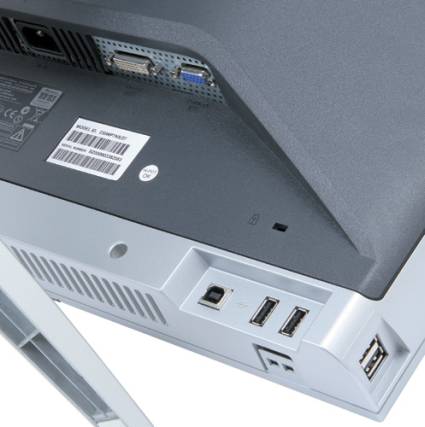Wide Format LCD Monitors: Part 2
Ergonomics
This is hands down the most ergonomically-correct monitor we tested in this article. It has both tilt and height adjustments. There is a pivot mode. The OSD is simple and complete. Philips has also redesigned the arrangement of the buttons on the front panel and the material of which they are made. The monitor also has a rear carrying handle.
Connectivity And Equipment
The essentials are here: DVI and VGA connectors. Philips hasn't stuck with its tradition of built-in speakers, but you won't hear any complaints about that from us.
A No-Frills Monitor
The results were very good with the default adjustments. The values were very close to the standard for 6500K. The sRGB adjustment was also convincing, which is not true of any of the models we reviewed in our preceding article.
As is often the case with Philips, the darkest colors get the short end of the stick, as the graph shows.
| Black spot | White spot | Contrast |
|---|---|---|
| 0.45 | 190 | 422: 1 |
The black level wasn't exceptional, but the brightness is much less controlled on the competing monitors. Here again, you can see that Philips has made effort to offer a professional monitor with a very good quality / price ratio. The default brightness adjustment shows that - the brightness won't blind you even if you spend long hours working at it.
Get Tom's Hardware's best news and in-depth reviews, straight to your inbox.
While the contrast isn't exceptional in absolute terms, at least it's fairly stable.
Tested with the Gretag calibrator, the monitor showed a color range that was a little wider in the greens than its competitors. In fact, it is as if the color range has been rotated, since at the same time the range of the reds is a little narrower.



